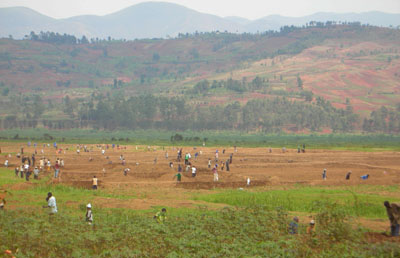
A version of this post originally appeared on the CSIS blog.
In mid-September 2010, President Joseph Kabila of the Democratic Republic of Congo announced a comprehensive ban on mining in three provinces of the conflict-wracked eastern Congo. During my recent visit to the region, the ban was a central preoccupation for most of the diggers, traders, government agents, and civil society representatives with whom I met. Many were skeptical of the sudden action, and many more fearful of the security and economic consequences of a long-term embargo on mining in the region. Kabila’s ostensible justification has been that the trade does not benefit local populations and that the ban on minerals will allow the government to rid the sector of the “kind of mafia” that currently control it.
Although Kabila’s real motives remain clouded, it is likely that increasing international attention on the role of conflict minerals in fueling Congo’s war and the recent passing of U.S. legislation designed to combat this trade in the Dodd-Frank Wall Street Reform Act influenced his decision. The timeframe for lifting the ban has not been made public, and beyond the decree, the president has done little to indicate a way forward within the sector. The Congolese government has done nothing to help affected communities, and both illegal mining and human rights abuses continue despite the ban. If the ban has illustrated anything, it is the inadequacy of a haphazard approach to eastern Congo’s mineral sector, and the likely costs of a failure to establish a credible, effective, and sustainable minerals certification regime.
Critics of the legislation are quick to decry the negative impact on livelihoods that could arise if private sector investors and companies walk away from the Congo, but as the impact of Kabila’s ban makes clear, it is unlikely that such action would actually cause mining activity to cease. Militarized extraction and black market trading would continue, with traders and exporters looking to eastern Europe, China, and other Asian economies for demand. Additionally, most major electronics manufacturers and component suppliers would not be able to simply withdraw extraction from the region. The significance of Congo’s mineral reserves is too great for world markets to ignore, particularly in the case of tantalum, which currently accounts for as much as 60 percent of the world’s global supply. Also, a steady, unregulated, and less-expensive supply of materials coming out of the Great Lakes region would have damaging effects on the global prices of these commodities. If U.S. companies are forced to find alternative sources, prices will increase and competitive advantage will go to companies and countries with less reputational risk that are willing to procure the cheaper central African materials. Either way, companies affected by the U.S. legislation lose, giving them every incentive to ensure the speedy stand-up of a regional certification system that would enable the credible sourcing of responsible materials from the region and avoid such a scenario.
The other imperative for more urgent and comprehensive efforts to reform the Congolese mineral sector is the looming crisis in marginalized mining communities in the three affected provinces. The small-scale mining sector in eastern Congo is responsible for a massive cash economy on which many Congolese are solely dependent; from the miners, traders, and comptoirs (licensed exporters of the minerals), to the small businesses and services that spring up and become dependent on these groups. Negative economic implications of an extended embargo will ripple through nearly every source of livelihood in the Kivus, Maniema, and north Katanga and, if not mitigated, could have enormous destabilizing effects on the region. Therefore, it is critical for the success of stability and security that international actors work with the Congolese government and private sector to develop a strategy to support communities around militarized mine sites. Elements of the strategy should include economic diversification, formalized employment in the mining sector, and alternative livelihood development. Ironically, plans to do just this were part of the government’s stabilization plan for the region, but have been held up as a result of the ban.
The U.S. government has taken a leadership role in focusing on Congo’s conflict minerals, thanks to bipartisan leadership in Congress, personal commitments from the senior-most levels of the State Department, and a groundswell of consumer activism. The passing of the conflict mineral provision in the Wall Street Reform Act now requires publicly traded companies that use designated conflict minerals in their products to report annually to the Securities and Exchange Commission, or SEC, as to whether or not their sourcing of these materials directly or indirectly funds armed groups committing illegal acts in Congo or central Africa.
Click here to continue reading.

